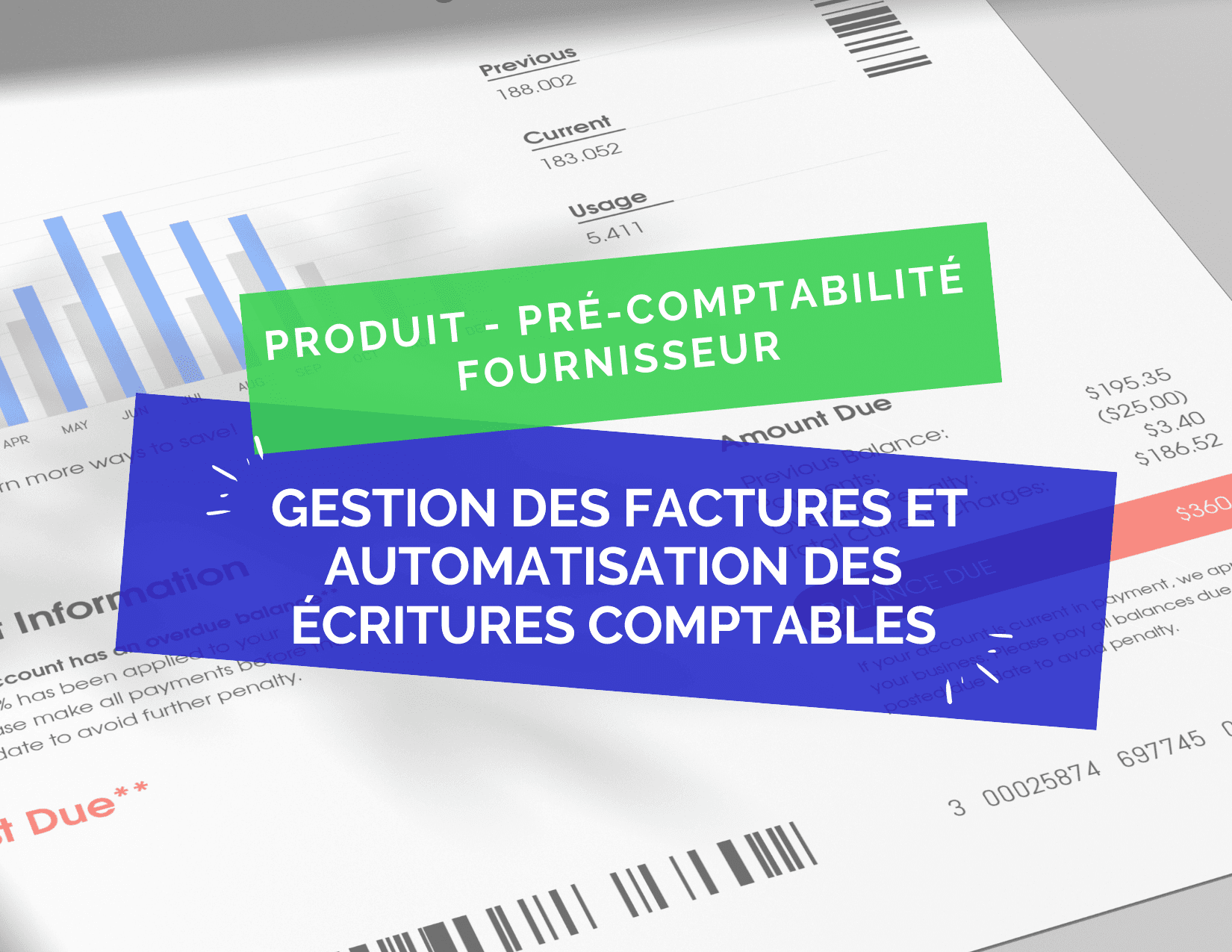Electronic invoicing 2026 and its impact on BtoB companies
lucas-fontaine
•
Jul 8, 2024
No more paper.
Since 2020, the public sector has been required to manage its invoices in electronic format on Chorus Pro .
However, electronic invoicing between businesses (private) remains quite underused. Many exchanges and “material” transactions still exist.
But not for long. As you may already know, all companies, without exception (as long as they are VAT registered and established in France) will be required to issue, edit, and receive their invoices in electronic format by 2026 for most and by 2027 for the others.
For the State, the main objective is to facilitate fraud detection, improve its knowledge of companies, and optimize the management of economic policies.
For companies, this procedure has several advantages (cost reduction) that we will see in more detail at the end of this article.
At the European level, France is not alone in committing to this path, other countries such as Italy and Finland are already on board.
So, what are the steps of this reform and how will B2B companies need to manage their invoices concretely? But by the way, is electronic invoice the same as dematerialized invoice?
We explain everything to you.
What is an electronic invoice?
The official definition from the government (article 289 bis of the General Tax Code) states that an electronic invoice is “an invoice issued, transmitted, and received in a dematerialized form that necessarily includes a minimum base of data in structured form, distinguishing it from ‘paper’ invoices or ordinary PDFs”.
Electronic invoice and dematerialized invoice, what’s the difference?
You are probably used to printing and then scanning your paper invoices to send them via email in “pdf” format?
Although they are dematerialized, it is important to know that they are not considered electronic invoices.
It is the entire process that must be digitized. An invoice must indeed be created, sent, received, and stored in electronic format while complying with certain legal requirements. The invoice is an accounting document and must therefore contain a certain number of mandatory mentions.
Procedures and operation
E-invoicing and e-reporting
The e-invoice or “e-invoicing” will therefore concern all transactions between suppliers and buyers.
In practice, the company will create and submit its invoice either on the Public Invoicing Portal (PPF) or on a State Partner Dematerialization Platform (PDP). These platforms will be responsible not only for transmitting the invoice to the buyer/client but also for retrieving accounting data (VAT) to send to the tax administration, which we then refer to as “e-reporting.
Authentication methods for e-invoices
EDI
The company can use an Electronic Data Interchange (EDI) system. This solution applies mainly for large volumes of exchanges/transactions and for large companies.
The reliable audit trail (PAF)
This involves “permanent internal controls” based on the documented reconstruction of the invoice management process (purchase orders, delivery notes, etc.)
The electronic signature
Immutable, the certificate generated by advanced electronic signature guarantees the authentication of an e-invoice.
An exception: The Factur-X
The Factur-X is a hybrid means that meets invoicing standards. It is a blend between PDF format (readable data) and XML (structured data).
This solution is tending to become the most used by companies.
Key dates
September 2026:
- Mandatory receipt of electronic invoices for all companies
- Mandatory issuance of e-invoices and e-reportings for large companies and Intermediate-Sized Enterprises (ETI)September 2027:
- Mandatory issuance of electronic invoices and e-reportings for TPE (micro-enterprises) and SMEs
Difference between PDP and PPF
The Public Invoicing Portal
It is the main (and public) actor in the reform of electronic invoicing between companies. It is a free service for all issuers and recipients of e-invoices.
The Partner Dematerialization Platforms
These are private operators recognized by the administration as partners.
Only PDPs and PPFs can transmit invoices to recipients and data to the tax administration.
Moreover, PDPs generally offer additional paid services.
The benefits of electronic invoicing for companies
Time savings and cost reductions are the main benefits of this reform.
We can cite more specifically:
- The reduction in time spent on administrative management.
- The limitation of errors and omissions
- The reduction in the cost of processing an invoice (more than 10 euros for a paper invoice versus about 4 euros for an e-invoice)
- Facilitation of VAT declarations
- Reduction in payment delays
- Optimization of cash flow projections and Working Capital Requirements (WCR)
- More transparent client-supplier relationships.
Challenges and impacts of the reform on accounting experts
Just like for companies, electronic invoicing will have many benefits for accounting firms managing the accounts of TPEs and SMEs.
Electronic invoicing will significantly limit certain time-consuming tasks such as collecting proofs and documents.
The accounting expert will thus be able to focus on the advisory dimension and supporting managers, more than on technical expertise.
Moreover, large companies, at least those already using one or more accounting software (ERP), will, in theory, not be very affected by mandatory electronic invoicing. APIs with the PPF and/or PDP will be offered by these tools, and accounting experts will continue to provide their advice occasionally.
On the other hand, for smaller companies, it’s different. The accounting firm must be familiar with existing dematerialization solutions and raise awareness among their clients about their use. The challenge is also organizational: How to organize your firm and redistribute the time saved on new missions? (administrative follow-up, financial follow-up, advice, etc.)
F.A.Q :
1. What is an electronic invoice?
An electronic invoice is an invoice issued, transmitted, and received in a dematerialized form, which necessarily includes a minimum base of data in structured form, distinguishing it from “paper” invoices or ordinary PDFs.
2. What’s the difference between an electronic invoice and a dematerialized invoice?
A dematerialized invoice can simply be a printed paper invoice that is then scanned and sent via email in “pdf” format. In contrast, an electronic invoice must be created, sent, received, and stored in electronic format while complying with certain legal requirements.
3. What are the steps of the electronic invoicing reform?
Starting from September 2026, all companies will need to be able to receive electronic invoices, and large companies and ETIs will need to issue e-invoices and e-reportings. Starting from September 2027, TPEs (micro-enterprises) and SMEs will also need to issue electronic invoices and e-reportings.
4. What are the benefits of electronic invoicing for companies?
The benefits of electronic invoicing for companies include a reduction in time spent on administrative management, a limitation of errors and omissions, a reduction in the cost of processing an invoice, facilitation of VAT declarations, reduction in payment delays, optimization of cash flow projections and working capital requirements, and more transparent client-supplier relationships.
5. What are the challenges and impacts of the reform on accounting experts?
Electronic invoicing will limit certain time-consuming tasks such as collecting proofs and documents for accounting firms. Accounting experts will thus be able to focus on the consultancy dimension and supporting managers. The challenge is also organizational: how to organize your firm and redistribute the time saved on new missions?
In summary:
Electronic invoicing becomes mandatory for all companies subject to VAT and established in France by 2026 for most and by 2027 for others. An electronic invoice must be created, sent, received, and stored in electronic format while complying with certain legal requirements. The benefits of electronic invoicing for companies include a decrease in time spent on administrative management, limitation of errors and omissions, reduction in the cost of processing an invoice, facilitation of VAT declarations, reduction in payment delays, optimization of cash flow projections and working capital requirements, and more transparent client-supplier relationships. Electronic invoicing will also have impacts on accounting firms, which will need to focus on the consultancy dimension and support managers, redistributing the time saved onto new missions.


